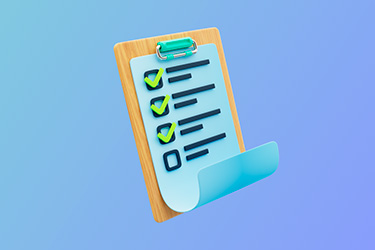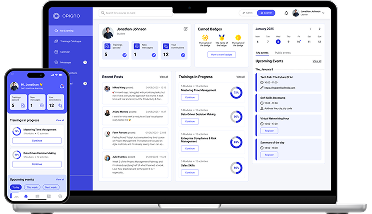Whether you are building a comprehensive online training ecosystem from scratch or moving existing L&D operations online, it's a vast and undeniably complex undertaking, and its success largely depends on finding the proper e-learning platform. But with so many factors and options, how do you choose?
To help you start off on the right foot, we've curated resources that will guide you through the first steps of the process, from understanding core e-learning concepts to navigating abundant LMS market options.
We want this hub to be your one-stop resource for a smooth and informed LMS transition, and we will continuously update it with new guides and materials. In the meantime, if you have any questions about switching to Opigno LMS — shoot us a query via the "Contact us" form.
LMS: an introduction
The edtech market offers countless options for e-learning, with LMS being the most popular choice. And for good reasons: an LMS is designed to be a one-stop shop for most learning needs and scenarios, from K-12 to paid courses to corporate training. Therefore, once you can navigate the LMS market confidently, you will likely find an optimal solution for your use case.
But first, you need to learn what an LMS is and what core features it offers. For a surface-level overview, check out our LMS Definition post, which explains the term and core LMS functionalities:

And if you are considering implementing an LMS and want to learn more about how it can be used in various settings, dive into the "What is an LMS?" article:

Reasons to switch to LMS
LMS's popularity among other e-learning solutions is explained not only by its flexibility in terms of use scenarios but also by how it makes e-learning more affordable, manageable, and streamlined.
Traditional training methods can be inefficient, often involving paper manuals, instructor-led sessions, and disjointed resources. On the contrary, managing training with the help of an LMS alleviates many struggles associated with classroom training. Here are five ways you can expect an LMS to improve the learning process tangibly:
5 benefits of using a LMS to manage training

Training inefficiencies can turn into bottlenecks for large and growing organizations, flushing budgets down the drain. If this situation sounds familiar, it's time for your enterprise to transition to an LMS. Check the article below to find out when switching to an LMS is the right strategic move and how it can streamline training delivery and management:
When and Why an Enterprise Should Switch to a Learning Management System?

Speaking of LMS's cost efficiency, you can use this guide to pinpoint what aspects of training management require cost optimization measures and see how an LMS can help you achieve that seamlessly:
How to Drastically Reduce L&D Costs with LMS

Choosing the right LMS
Now, to the most challenging part — finding The LMS. With hundreds of options available, it's essential to go beyond basic features and choose a platform that aligns with your needs and budget. This section will equip you with the knowledge to make an informed decision.
A great place to start your LMS journey is to explore the LMS landscape and the main categories of LMS solutions available in the market. The article below provides a comparative overview of different LMS platform types. While it won't offer in-depth reviews, it can be a valuable starting point for narrowing down your options.

Among the LMS categories covered in the overview above, we'd like to highlight two options we are the most knowledgeable of: cloud-based and open-source (namely, Drupal-based) LMSs.
While the core functionalities of a well-designed LMS are more important than the underlying platform, Drupal offers unique advantages, such as open-source nature and customization options. The following article focuses on the benefits of a Drupal-based LMS and can be helpful if you're already using a Drupal platform or have a strong preference for open-source software:
What are the Advantages of a Drupal-based LMS?

Cloud technology also has its unique perks, i.e., scalability, easy maintenance, and accessibility from any device, giving cloud-based LMSs an upper hand in many use cases. To further explore the advantages and disadvantages of cloud-based LMS solutions and see if this option is optimal for your organization, check out this blog post:
What is Cloud LMS? Pros and Cons of Cloud Technology in e-Learning

If you still feel conflicted between the two options, dive into the article below for a deeper comparison of cloud-based and self-hosted LMS solutions to help you decide based on factors like security needs, technical expertise, and desired level of control:
Cloud vs. Self-Hosted LMS: Which One to Choose

Once you know what options exist per se, the next step is defining your requirements, like the organization's size, the types of training content, and the level of user interaction required. To help you with this fundamental task, we've prepared a comprehensive checklist to help you identify the crucial features of your ideal LMS:
How to Choose an LMS: a Checklist of Features and Requirements You Should Look For

Remember, choosing the right LMS isn't a one-size-fits-all proposition. You can find the perfect platform to elevate your training programs and empower your learners by carefully assessing your needs and exploring the options available.
Bonus: Understanding e-learning
Even if you're familiar with traditional training methods, navigating the world of e-learning can introduce new terminology and concepts. This e-learning glossary unpacks essential terms you'll encounter on your LMS journey, from "Accessibility" to "Learning Management System (LMS)" itself.

By familiarizing yourself with this vocabulary, you'll be able to navigate LMS features confidently, understand course descriptions, and stay ahead of the curve in the ever-evolving world of e-learning.
Published on May 28, 2024
